

Old Customshouse of Wilmington, Delaware
Introduction.
Text-to-speech Audio
2010 photo of Old Customshouse in Wilmington, DE.
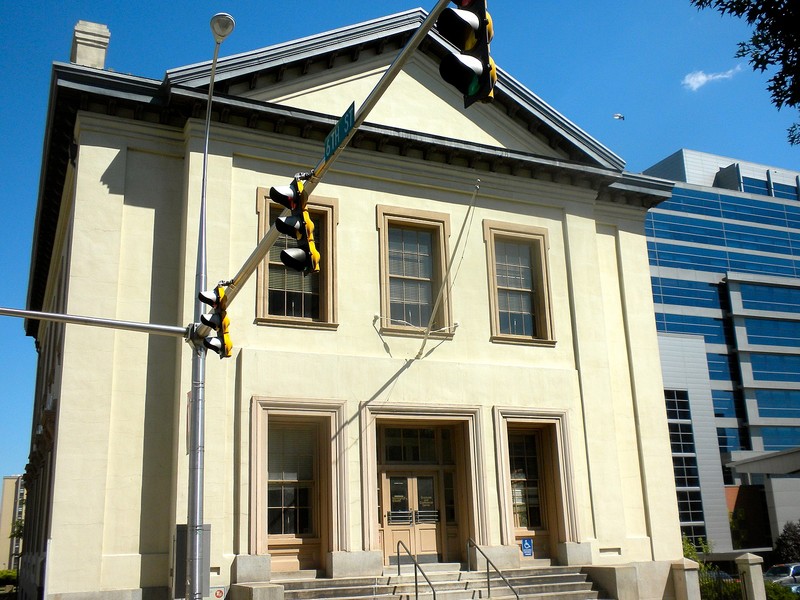
1991 photo of Old Customshouse in Wilmington, DE.

1900 photo of Old Customshouse in Wilmington, DE.
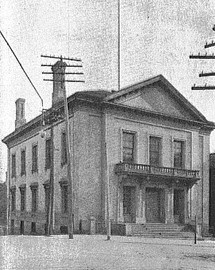
Backstory and Context
The Old Customshouse opened in 1855. Delaware's first customs house sat in New Castle before moving to Wilmington in 1800. In 1837, the First Board of Trade emerged, intending to promote trade through Wilmington's port. The organization's first move involved appealing to Congress for a permanent custom house. Construction began in 1852 on the historic customs building, which eventually supported the Customs Department, Federal Court, and Post Office. Wilmington has since matured into an international port city that employs more than 5,000 people and generates more than $400 million in revenue.
The U.S. Congress authorized on August 31, 1852 construction of Wilmington's Customs House. Delaware Representative, George Read Riddle, sponsored the bill through the House; he also purchased Moore's Carriage Works in Wilmington in 1853. Ammi Burnham Young, who Congress appointed Supervising Architect of the Offices of Construction of the Treasury Department in 1852, designed the two-story Greek revival building consisting of a cut stone base, stucco exterior walls, and four smokestacks.
Builders employed an innovative foundry technology (for the era) to install the structure's iron hip roof, a testament to Wilmington's maturing ironworks industry. The iron founding and fabricating business got its start in Delaware with the formation of Phoenix Foundry in 1826. McCullough and Company, who handled the Customhouse roofing, opened in 1847 along with several other ironworks companies by the start of the Civil War. Indeed, by 1860, the iron industry evolved into Delaware's second most significant industry and, by 1868, Wilmington produced more iron ships than the rest of the United States combined.
Delaware Works Progress Administration occupied the building in 1937 (part of FDR's New Deal initiative) when the post office moved to a new home. During the Korean and Vietnam wars, drafted soldiers reported to the Old Customshouse, which served as the military's induction site for drafted soldiers. During the 1960s, the city debated the usefulness of what had become the vacant Old Customshouse. Eventually, the Custom House became Delaware's first example of a private building on the National Register renovated for public use. Wilmington College took over the Old Customshouse and subsequently remodeled it in 1981. The college remained in the building until 2004 and then sold it to investors in 2008; its current status remains unclear.
The Old Customhouse stands as one of seventy Federal buildings constructed during Ammi B. Young's role as Supervising Architect of the Offices of Construction of the Treasury Department from 1852 to 1862. The building serves as a reminder of when Wilmington developed into a burgeoning port city and an ironworks hub. Today, Wilmington serves as a major international port.
Dayton, Richard L. "Nomination Form: Old Customs House." National Register of Historic Places. nps.gov. November 21, 2011. https://npgallery.nps.gov/GetAsset/7dab6c91-6817-410b-ae2f-8925554996b3/.
Hoffecker, Carol E. Wilmington, Delaware: Portrait of an Industrial City, 1830-1910. Charlottesville: The University Press of Virginia, 1974. Digital copy found at delaware.gov. https://archivesfiles.delaware.gov/ebooks/Wilmington,_Delaware_Portrait_of_an_Industrial_City.pdf.
Maynard, W. Barksdale. "Old Custom House (Old Federal Building)." Society of Architectural Historians. SAH Archipedia. Accessed January 27, 2021. https://sah-archipedia.org/buildings/DE-01-WL21.
By Smallbones - Own work, Public Domain, https://commons.wikimedia.org/w/index.php?curid=10698136
By Tommyboymee - Own work, CC BY-SA 4.0, https://commons.wikimedia.org/w/index.php?curid=44922770
By U. S. Treasury Department, Washington, DC 1901 - https://archive.org/details/historyofpublicb00unitde, Public Domain, https://commons.wikimedia.org/w/index.php?curid=44923010
Additional Information
- Nomination form to the National Register of Historic Places
- Library of Congress photo collection: Old Customs House, King at Sixth Street, Wilmington, New Castle County, DE
- Carol E. Hoffecker: Wilmington, Delaware: Portrait of an Industrial City,
- Port of Wilmington website
- Old Custom House (Old Federal Building) on the Society of Architectural Historians (SAH Archipedia) website

The importance of preserving cultural and traditional values
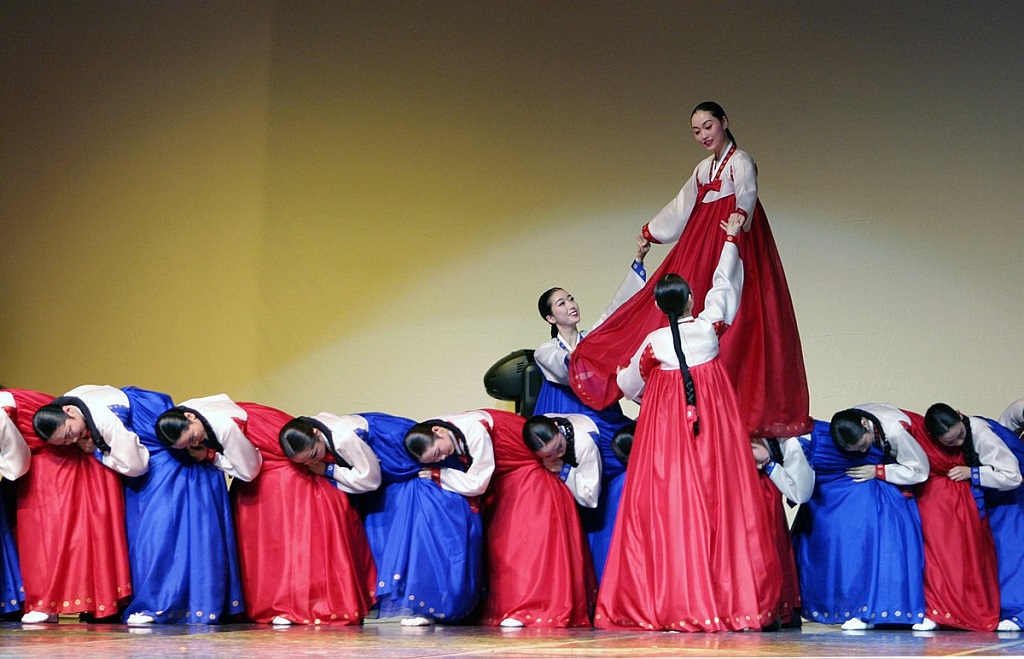
22 Dec The importance of preserving cultural and traditional values
In recent years there has been a lot of talk about the urgency and importance of preserving our environment. Pollution and careless exploitation are certainly undermining the ecosystems ‘ chances of natural recovery. However, globalization has brought with it strong cultural pressures that threaten to eradicate ancient cultures and, customs and traditions.
Table of Contents
The importance of preserving cultural
Those cultures are as important and valuable as our environment. The different ways in which human beings have established relationships with the natural and social environment require our attention and are worthy of being cared for and preserved.
The cultural, patrimonial, and historical heritage that we have allows us to understand ourselves better. But it is not just a matter of privileging the indigenous and rejecting the foreign. Understanding and enjoying our historical and cultural baggage will also allow us to better adapt to foreign cultural influences, making them enrich us instead of simply copying them without adding value.
Culture includes the way we express ourselves, language, the way we see and respond to things, our myths and beliefs, our knowledge about our natural and social environment, our gastronomy, tastes, and customs. Giving up would leave us orphans of identity and we would lose an important part of our value as individuals.
More than protecting our cultural characteristics, the ideal is to reinforce and enhance them, to make them stronger in the face of external factors. This, again, does not mean that we should renounce different cultural influences, for we can do so without losing the essence of our culture.
In short, just as it is important to preserve our tangible cultural heritage, it is equally important to preserve and promote our intangible cultural heritage. This will allow us to understand where we are in the world, where we are, and how we can contribute to enriching world culture and economy in the age of globalization.
The importance of preserving our traditions
Throughout each year in our country, various traditions are celebrated, a sample of them is exhibited during December and January, in which in each home we can notice the way in which families end a year and give it the welcome to another.
Regardless of the nature of each celebration, that is, if it addresses cultural and/or religious issues, it is important to highlight that this freedom that we enjoy to believe and live our preferences is born from the recognition and protection of our fundamental rights, such as the right to freedom of expression, thought and freedom of worship and religion.
Likewise, the exercise of such rights in relation to our traditions, in turn, means the enrichment of our identity, and with it, as the Guiding Norm itself points out, of the multicultural composition that Mexico enjoys, and under which Respect for the identity of the other is a fundamental pillar that contributes to preserving this range of colors, flavors, and thoughts that allows us as Mexicans to express our particular perspective on life.
In this sense, I invite you to embrace and make your own the traditions with which you identify, to transmit them to those who have an interest in them and of course, to respect the customs of those who prefer something different, since respect for our differences and the freedoms of others, is the basis of any democratic system.
May the year that now begins, lead us to be proud of our Nation and of the freedoms that we enjoy under its protection, and that each goal that we have set, contribute to exalt Mexico and to spread and preserve the wonder of our traditions.
No Comments
Sorry, the comment form is closed at this time.

- National/World
- Solar Eclipse
- Vietnam Reflections
- Special Reports
- NYS Capitol Bureau
- Washington DC Bureau
- Local Weather
- Closings and Delays
- Email Alerts & Apps
- Let's Talk Weather with Joe Veres
- Web Weather Extra
- Winter Ready
- Local Sports
- Road to Vegas
- Around The Diamond
- College Sports
- Elmira River Sharks
- Elmira Pioneers
- High School Sports
- Play of the Week
- Thunder at the Glen
- Twin Tiers Football
- Twin Tiers Tip-Off
- Counsel's Corner
- Financial Health
- Midday Makeover
- Pet of the Week
- This Week in Wine Country
- Community Calendar
- Local Shows
- TV Schedule
- Trade and Technical School Scholarship
- Advertising and Marketing
- Creative Services & Promotion
Biden Delivers NATO Speech as Questions Surrounding Reelection Chances Intensify

WASHINGTON, D.C. (WENY News) -- The American public, NATO allies and U.S. adversaries from across the globe were watching closely during President Joe Biden's speech to mark the 75 th anniversary of the North Atlantic Treaty Organization (NATO).
This week, questions surrounding the 81-year-old President’s cognitive health continue to intensify. It’s been the talk of the town in Washington, D.C. following the President’s dismal debate performance as well as recent reports of a Parkinson's specialist visiting the White House on multiple occasions in the past year.
House Democrats, who met Tuesday morning to discuss the matter, are divided when it comes to supporting Biden in his reelection bid. There are at least ten House Democrats who have publicly or privately expressed Biden should step aside. House Democratic leaders are optimistic the conference will unite together in order to achieve their goal of defeating Donald Trump in November.
“What House Democratic Caucus leadership is asking our members to do, is to talk about the importance of preventing Donald Trump from ever setting foot in the White House. I don't want Donald Trump on the public tour of the White House," said Rep. Pete Aguilar (D- CA), the House Democratic Conference Chair. " The President knows that he did not have a good debate performance. He knows that he has to be out there in people's districts, out in the communities, out in these tough states. He knows that. And that's what we'll see in the in the days and weeks ahead,” Aguilar added.
Many Democratic senators, especially those in close contests this November, are staying relatively quiet. Others, including Senate leaders, are standing firm with Biden.
“As I’ve said before, I’m with Joe,” said Senate Majority Leader Chuck Schumer (D- NY).
Biden delivered the Tuesday evening to mark the 75 th anniversary of NATO from the Mellon Auditorium, where the North Atlantic Treaty was signed in 1949. The speech was scripted and read from a teleprompter and delivered with little to no hiccups or stumbles.
“Ukraine can and will stop Putin,” said Biden, who also announced plans to supply new air defenses to Ukraine during the speech. “Russia will not prevail. Ukraine will prevail.”
At the end of the speech, the 81-year-old President awarded the Presidential Medal of Freedom, the highest civilian honor in the U.S., to NATO Secretary General Jens Stoltenberg.
President Biden is scheduled to deliver remarks during a news conference Thursday where he is expected to face questions about his age and cognitive health.
This is Home
Florida school board, sued for book bans, wants to take testimony of 7-year-old student
Florida has more book removals and more book challenges than any other state, free speech groups say..
A Florida school board is trying to take the deposition of one of its 7-year-old students in the hopes it helps tank a federal lawsuit filed over some of its book ban decisions.
The Escambia County School Board, which is simultaneously arguing its own members can't be deposed, says it "has the right to explore the claims and defenses in the case directly with the students."
A deposition is out-of-court testimony by a witness given under oath, often at an attorney's office, for a lawsuit.
"What a parent thinks their child wants to read and is interested in and what the child actually wants to read and is interested in may be different," a defendant's attorney wrote to those suing in emails found in court records .
The case at hand was filed by national free speech group PEN America, book publisher Penguin Random House, book authors and the parents of students who were denied access to school library books.
Those students range from elementary schoolers to high schoolers. Parent Ann Novakowski joined the lawsuit on behalf of her now-7-year-old, "J.N.," because she wants "her child to have access to these books, and others like them, among other reasons, so that she is presented with different viewpoints and experiences and, thus, better prepared to engage with a wide range of people," according to the complaint .
The parties have agreed to depositions of the older students with some limitations and parental supervision, according to court records, but the plaintiffs draw the line at elementary-age children.
"It would require young J.N. to devote time away from family and friends to prepare for her testimony and to face questioning by opposing counsel in deposition – an experience that is enormously difficult and stressful for adults, let alone a seven-year-old," they wrote in a court motion last week.
Those suing say J.N. and other students like her have been negatively affected by the removal of several books, including " And Tango Makes Three ," a children's picture book about a same-sex penguin pair raising a chick together.
It comes at a time when conversations about " book bans " have swept the nation. Florida has been a focal point, with advocacy organizations finding the state has more book removals and more book challenges than any other.
And Escambia, Florida's westernmost county, has been one of the epicenters of controversy . It's gotten hit with two federal lawsuits that could set important First Amendment precedent for the nation, with county officials arguing they have the right to remove any school library book, for any reason.
But first, the legal parties have to get through the depositions.
Plaintiffs want judge to restore nearly 200 titles to shelves
In the meantime , plaintiffs in the PEN America case are asking U.S. District Judge T. Kent Wetherell, before making a final decision on the case, to return seven of the nearly 200 challenged books that remain restricted in county public schools as of late June.
"For well over a year, defendant Escambia County School Board ... has restricted access to books in its school libraries based on nothing more than discriminatory viewpoint-based challenges by local residents who dislike the messages in those books," the wrote in a motion filed last week.
The books refer to LGBTQ or race topics. Most of them were first restricted pending review nearly two years ago.
The school district has also pulled hundreds of unchallenged books for review. They were flagged as possibly contrary to one of the multiple laws passed by Gov. Ron DeSantis and the GOP legislative supermajority that led to the state book removal surge.
Diving into depositions: Questioning can be heated
Depositions usually entail someone taking questions — sometimes heated, hard ones — from attorneys. The plaintiffs in the case at hand say it's not only hard on the 7-year-old but also unnecessary, with her mother able to answer the questions on her behalf.
"The courts have consistently held that a student’s potential access to a book outside of school is irrelevant to that student’s standing to challenge restrictions on access to that book within school," the plaintiffs also argued. "To the extent that the Board seeks to examine J.N. regarding her ability to access these books outside of the school library (a topic they have raised in the student depositions that have taken place so far in this case), that is not a basis to depose her."
If the court determines the elementary schooler should sit for a deposition, her attorneys say it should "significantly limit" it. But the Escambia County School Board also is asking the court to prevent the deposition of its five members and superintendent. Board members say they're protected by "legislative privilege."
"It cannot be disputed that the Board’s actions in deciding to remove or restrict certain books were legislative in nature," they said in a late June filing . "Requiring the Board members to testify as to their motives and underlying thoughts concerning their decision to remove or restrict the books at issue would eviscerate the privilege’s purpose, which is to protect the 'legislative process itself.'"
The defendants also cited legal protections held by some government officials and say depositions are unnecessary anyway because deliberations happened before the public.
County school officials also are trying to get out of depositions in a separate high-stakes lawsuit filed against them, this one by the authors of "And Tango Makes Three."
The authors say the board members removed "And Tango Makes Three" from its school shelves "because of its positive depiction of a same-sex couple and their family." And they produced emails they say show at least one member had "individual animus" toward it because of such content.
Two days before the board members voted on whether to remove the title, a constituent emailed board member Kevin Adams that she was opposed to the book because it "(promoted) transsexual decisions and homosexual ideas." Adams responded the next day, "I agree with your concerns and will vote accordingly." He did not respond to a request for comment.
Book ban lawsuit filed against state: Florida says governments can ban school library books just because they disagree with them
First Amendment laws that took effect: New laws that involve the First Amendment are soon taking effect in Florida
This reporting content is supported by a partnership with Freedom Forum and Journalism Funding Partners. USA Today Network-Florida First Amendment reporter Douglas Soule can be reached at [email protected] .
- Updated Terms of Use
- New Privacy Policy
- Your Privacy Choices
- Closed Caption Policy
- Accessibility Statement
This material may not be published, broadcast, rewritten, or redistributed. ©2024 FOX News Network, LLC. All rights reserved. Quotes displayed in real-time or delayed by at least 15 minutes. Market data provided by Factset . Powered and implemented by FactSet Digital Solutions . Legal Statement . Mutual Fund and ETF data provided by Refinitiv Lipper .
Hostage-taking and door-slamming: Eccentric, centuries-old customs at Queen's Speech

Britain's Queen Elizabeth II waits for lawmakers to arrive before delivering the Queen's Speech in the House of Lords in the Palace of Westminster during the State Opening of Parliament in London, Wednesday, May 27, 2015. The Queens Speech outlines her governments legislative plans for the forthcoming parliamentary year and the laws and bills they hope to pass. (AP Photo/Alastair Grant, Pool) (The Associated Press)
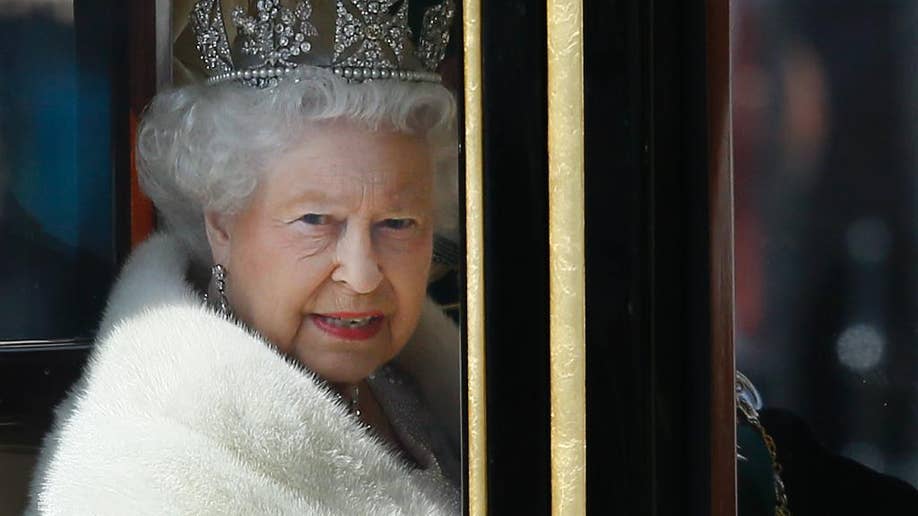
Britain's Queen Elizabeth II travels in a carriage from Buckingham Palace towards the Houses of Parliament in London, Wednesday, May 27, 2015. The Queen will deliver a speech to open Britain's Parliament after the new Conservative government was elected. (AP Photo/Kirsty Wigglesworth) (The Associated Press)
LONDON – The Queen's Speech, which formally opens Britain's parliament each year, is a colorful ceremony steeped in traditions dating back centuries. The costumes and elaborate rituals may appear eccentric today, but many reflect historic tensions between the monarchy and Parliament.
Here's a look at the pageantry and customs of the event and what they mean:
SECURITY 'PRECAUTIONS'
Before the queen travels to Parliament from Buckingham Palace, royal bodyguards known as Yeomen of the Guard perform a ceremonial search of the cellars of the Palace of Westminster. The tradition, which dates from the 1605 "gunpowder plot" to blow up Parliament, is followed by a police sweep.
Another quirky tradition is the "hostage" lawmaker — a government whip is "kidnapped" to be held at Buckingham Palace to ensure the monarch's safe return after she delivers her speech. The custom dates centuries back to a time when the monarch and Parliament were on less cordial terms.
The queen delivers her speech from the House of Lords — no monarch has set foot in the Commons since Charles I tried to arrest five lawmakers for treason in 1642.
THE REGALIA
While the queen and her husband, Prince Philip, travel to Westminster in a state coach, the traditional items symbolizing the authority of the monarch — the Imperial State Crown, the Cap of Maintenance and Sword of State — travel in their own carriage ahead of the queen.
As the queen arrives at the House of Lords, greeted by a 41-gun salute, she walks up a set of stairs to the Robing Chamber, passing between cavalry soldiers in full dress with drawn swords. They are the only troops to bear arms within the palace.
The queen puts on the crown and the parliamentary robe in the room before emerging for the ceremony in the House of Lords. The sword and the cap are carried in front of her.
THE BLACK ROD
Once the queen takes the gilded throne, an official known as the Gentleman Usher of the Black Rod — or simply Black Rod — acts as her messenger and summons the lawmakers gathered in the House of Commons. As he approaches the chamber, the door is slammed in his face, a symbol of the Commons' independence from the monarchy as well as its supremacy over the Lords.
Black Rod has to knock three times with his ebony staff at the door, which has a visible dent from all the knocking over the years, before he is allowed to enter.

Fox News' "Antisemitism Exposed" newsletter brings you stories on the rising anti-Jewish prejudice across the U.S. and the world.
You've successfully subscribed to this newsletter!
- Top Stories
- Listen Live
- ArizonaSports.com
- Arizona News
- Arizona Sports
- Arizona Business
- Arizona Votes
- Arizona Immigration
- Arizona Education
- Arizona Health
- Arizona Traffic
- Arizona Weather
- East Valley Youth Violence
- Arizona Technology
- Arizona Wildfires
- Community Spotlight
Sponsored Articles
- Arizona's Morning News
- The Mike Broomhead Show
- The Ramsey Show
- The Chris and Joe Show
- Outspoken with Bruce and Gaydos
- The Chad Benson Show
- Complete Lineup
- Silent Witness
- Rosie on the House
- Chew On This
- Data Doctors
- Kim Komando Tech Tips
- On-Air Schedule
- Staff Social Media
- Contests and Events
- Text Alerts
- Everyday Strong
Eccentric, centuries-old customs at Queen’s Speech
May 27, 2015, 5:55 AM

Yeomen of the Guard hold their lanterns as they prepare to conduct a ceremonial search in the Palace of Westminster, before the State Opening of Parliament in London Wednesday, May 27, 2015. The Queens Speech outlines her governments legislative plans for the forthcoming parliamentary year and the laws and bills they hope to pass. (AP Photo/Alastair Grant, Pool)n
(AP Photo/Alastair Grant, Pool)

BY ASSOCIATED PRESS
LONDON (AP) — The Queen’s Speech, which formally opens Britain’s parliament each year, is a colorful ceremony steeped in traditions dating back centuries. The costumes and elaborate rituals may appear eccentric today, but many reflect historic tensions between the monarchy and Parliament.
Here’s a look at the pageantry and customs of the event and what they mean:
SECURITY ‘PRECAUTIONS’
Before the queen travels to Parliament from Buckingham Palace, royal bodyguards known as Yeomen of the Guard perform a ceremonial search of the cellars of the Palace of Westminster. The tradition, which dates from the 1605 “gunpowder plot” to blow up Parliament, is followed by a police sweep.
Another quirky tradition is the “hostage” lawmaker — a government whip is “kidnapped” to be held at Buckingham Palace to ensure the monarch’s safe return after she delivers her speech. The custom dates centuries back to a time when the monarch and Parliament were on less cordial terms.
The queen delivers her speech from the House of Lords — no monarch has set foot in the Commons since Charles I tried to arrest five lawmakers for treason in 1642.
THE REGALIA
While the queen and her husband, Prince Philip, travel to Westminster in a state coach, the traditional items symbolizing the authority of the monarch — the Imperial State Crown, the Cap of Maintenance and Sword of State — travel in their own carriage ahead of the queen.
As the queen arrives at the House of Lords, greeted by a 41-gun salute, she walks up a set of stairs to the Robing Chamber, passing between cavalry soldiers in full dress with drawn swords. They are the only troops to bear arms within the palace.
The queen puts on the crown and the parliamentary robe in the room before emerging for the ceremony in the House of Lords. The sword and the cap are carried in front of her.
THE BLACK ROD
Once the queen takes the gilded throne, an official known as the Gentleman Usher of the Black Rod — or simply Black Rod — acts as her messenger and summons the lawmakers gathered in the House of Commons. As he approaches the chamber, the door is slammed in his face, a symbol of the Commons’ independence from the monarchy as well as its supremacy over the Lords.
Black Rod has to knock three times with his ebony staff at the door, which has a visible dent from all the knocking over the years, before he is allowed to enter.
Copyright © The Associated Press. All rights reserved. This material may not be published, broadcast, rewritten or redistributed.

Associated Press
Iran’s president Raisi, and foreign minister die in helicopter crash
Iranian President Ebrahim Raisi and the country’s foreign minister have been found dead hours after their helicopter crashed in fog.
2 months ago

Hamas accepts Gaza cease-fire proposal; Israel says it will continue talks but launches strikes
Israel began striking targets in the Gaza town of Rafah hours after Hamas announced it had accepted an Egyptian-Qatari cease-fire proposal.

Climate change has made heat waves last longer since 1979, according to study
A new study says climate change is making giant heat waves crawl slower across the globe with higher temperatures over larger areas.
3 months ago

Kate and William ‘extremely moved’ by support since the Princess of Wales’ cancer revelation
Kate, the Princess of Wales, and her husband, Prince William, are said to be “extremely moved” by the public’s warmth and support following her shocking cancer announcement
4 months ago

Kate, Princess of Wales, says she is undergoing chemotherapy for cancer
Kate, the Princess of Wales, said Friday in a video announcement she has cancer and is undergoing chemotherapy.
Putin extends rule in preordained Russian election after harshest crackdown since Soviet era
President Vladimir Putin sealed his control over Russia for six more years on Monday with a highly orchestrated landslide election win.

Sanderson Ford
3 new rides for 3 new road trips in Arizona
It's time for the Sanderson Ford Memorial Day sale with the Mighty Fine 69 Anniversary, as Sanderson Ford turned 69 years old in May.

Day & Night Air Conditioning, Heating and Plumbing
Beat the heat, ensure your AC unit is summer-ready
With temperatures starting to rise across the Valley, now is a great time to be sure your AC unit is ready to withstand the sweltering summer heat.

Collins Comfort Masters
Here’s 1 way to ensure your family is drinking safe water
Water is maybe one of the most important resources in our lives, and especially if you have kids, you want them to have access to safe water.
American culture: Traditions and customs of the United States
American culture's languages, religion, sports, styles, foods, arts and holidays

American style
American food, american holidays, additional resources.
American culture encompasses the customs and traditions of the United States. "Culture encompasses religion , food , what we wear, how we wear it, our language , marriage, music, what we believe is right or wrong, how we sit at the table, how we greet visitors, how we behave with loved ones, and a million other things," said Cristina De Rossi , an anthropologist at Barnet and Southgate College in London .
The United States is the third largest country in the world with a population of more than 332 million, according to the U.S. Census Bureau . A child is born every 9 seconds, and a person dies every 11 seconds.
In addition to Indigenous Americans who were already living on the continent, the population of the United States was built on immigration from other countries. A new immigrant moves to the United States every 666 seconds, according to the Census Bureau.
Because of this, the United States is one of the most culturally diverse countries in the world, according to The London School . Nearly every region of the world has influenced American culture, most notably the English who colonized the country beginning in the early 1600s, according to the Library of Congress . U.S. culture has also been shaped by the cultures of Indigenous Americans, Latin Americans, Africans and Asians.
The United States is sometimes described as a "melting pot", according to Golden Beacon USA , in which different cultures have contributed their own distinct "flavors" to American culture. Just as cultures from around the world have influenced American culture, today American culture influences the world. The term Western culture often refers broadly to the cultures of the United States and Europe, according to ScienceDaily .
The way people "melt" in the United States differs. "Different groups of immigrants integrate in different ways," De Rossi told Live Science. "For example, in the United States, Catholic Spanish-speaking communities might keep their language and other cultural family traditions, but are integrated in the urban community and have embraced the American way of life in many other ways."
The Northeast, South, Midwest, Southeast and Western regions of the United States all have distinct traditions and customs. Here is a brief overview of the culture of the United States.
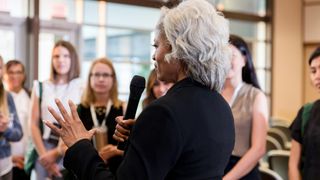
There is no official language of the United States, according to the U.S. government . While almost every language in the world is spoken in the United States, the most frequently spoken non-English languages are Spanish, Chinese, French and German. Ninety percent of the U.S. population speaks and understands at least some English, and most official business is conducted in English. Some states have official or preferred languages. For example, English and Hawaiian are the official languages in Hawaii, according to the Washington Post .
The Census Bureau estimates that more than 350 languages are spoken in the United States. The bureau divides those languages into four categories: Spanish; other Indo-European languages, which includes German, Yiddish, Swedish, French, Italian, Russian, Polish, Hindi, Punjabi, Greek and several others. Asian and Pacific Island languages, including Chinese, Korean, Japanese, Thai, Tamil and more are also included. There is also a category for "all other languages," which is for languages that didn't fit into the first three categories, such as Hungarian, Arabic, Hebrew, languages of Africa and languages of native people of North, Central and South America.

Nearly every known religion is practiced in the United States, which was founded on the basis of religious freedom . About 70% of Americans identify themselves as Christians, according to information gathered by the Pew Research Center , a nonpartisan research group, in 2017. The research also found that about 23% had no religious affiliation at all and around 6% of the population is made up non-Christian religions.
The number of people who identify with no religion seems to be decreasing. According to the Pew Research Center , this category is expected to drop from 16% in 2015 to 13% in 2060.

Clothing styles vary by social status, region, occupation and climate. Jeans, sneakers, baseball caps, cowboy hats and boots are some items of clothing that are closely associated with Americans, though there have been a variety of other styles throughout the decades, according to InterExchange . Ralph Lauren , Calvin Klein , Michael Kors and Victoria Secret are some well-known American brands.
American fashion is widely influenced by celebrities and the media, in 2019 US Clothing and Accessories sales amounted to 24 Billion US Dollars, according to Statista . More and more Americans are buying fashion, electronics and more online. According to the Census Bureau , U.S. retail e-commerce sales for the third quarter of 2021 totalled $214.6 billion.

American cuisine was influenced by Europeans and Native Americans in its early history. Today, there are a number of foods that are commonly identified as American, such as hamburgers, hot dogs, potato chips, macaroni and cheese, and meat loaf. "As American as apple pie", despite the dishes non-American origins, has come to mean something that is authentically American, according to the Smithsonian .
There are also styles of cooking and types of foods that are specific to a region. Southern-style cooking is often called "American comfort food" and includes dishes such as fried chicken, collard greens, black-eyed peas and cornbread, according to Southern Living . Tex-Mex, popular in Texas and the Southwest, is a blend of Spanish and Mexican cooking styles and includes items such as chili and burritos, and relies heavily on shredded cheese and beans, according to Culture Trip .
Jerky, dried meats that are served as snacks, is also a food that was created in the United States, according to NPR .

The United States is widely known around the world as a leader in mass media production, including television and movies. According to the Select US A , the United States comprises one-third of the worldwide media and entertainment industry and is worth $717 Billion.
The television broadcasting industry took hold in the United States in the early 1950s, and American television programs are now shown around the world, according to PBS. The United States also has a vibrant movie industry, centered in Hollywood, California, and American movies are popular worldwide. The U.S. film industry earned a record $100 Billion in 2019, according to Forbes , before dropping in 2020 due to the COVID pandemic .
The United States' arts culture extends beyond movies and television shows, though. New York is home to Broadway, and Americans have a rich theatrical history, according to Arcadia Publishing . American folk art is an artistic style and is identified with quilts and other hand-crafted items, according to the Folk Art Museum . American music is very diverse with many, many styles, including rhythm and blues, jazz, gospel, country and western, bluegrass, rock 'n' roll and hip hop.

The United States is a sports-minded country, with millions of fans who follow football, baseball, basketball and hockey, among other sports . Baseball, which was developed in colonial America and became an organized sport in the mid-1800s, according to Sporcle Blog , is known as America's favorite pastime, although its popularity has been eclipsed by football for the past three decades, according to the Harris Poll .

Many holidays are celebrated only in the United States. Americans celebrate their independence from Britain on July 4. Memorial Day , celebrated on the last Monday in May, honors those who have died in military service. Labor Day, observed on the first Monday in September, celebrates the country's workforce. Thanksgiving , another distinctive American holiday, falls on the fourth Thursday in November and dates back to colonial times to celebrate the harvest.
Presidents' Day, marking the birthdays of George Washington and Abraham Lincoln , is a federal holiday that occurs on the third Monday in February. The contributions of veterans are honored on Veterans' Day, observed on Nov. 11. The contributions of civil rights leader Martin Luther King Jr. are remembered on the third Monday in January.
Additional reporting by Alina Bradford, Live Science Contributor.
- University of Michigan: 101 Characteristics of Americans/American Culture
- Penn State: The Politics of Fashion in American Consumer Culture
- American Folk Art Museum
- World Atlas: Most Spoken Languages in America
Sign up for the Live Science daily newsletter now
Get the world’s most fascinating discoveries delivered straight to your inbox.
Kim Ann Zimmermann is a contributor to Live Science and sister site Space.com, writing mainly evergreen reference articles that provide background on myriad scientific topics, from astronauts to climate, and from culture to medicine. Her work can also be found in Business News Daily and KM World. She holds a bachelor’s degree in communications from Glassboro State College (now known as Rowan University) in New Jersey.
30,000 years of history reveals that hard times boost human societies' resilience
'We're meeting people where they are': Graphic novels can help boost diversity in STEM, says MIT's Ritu Raman
Study finds black holes made from light are impossible — challenging Einstein's theory of relativity
Most Popular
- 2 2,000 years ago, a bridge in Switzerland collapsed on top of Celtic sacrifice victims, new study suggests
- 3 What causes you to get a 'stitch in your side'?
- 4 What defines a species? Inside the fierce debate that's rocking biology to its core
- 5 Self-healing 'living skin' can make robots more humanlike — and it looks just as creepy as you'd expect
- 2 What causes you to get a 'stitch in your side'?
- 3 Tasselled wobbegong: The master of disguise that can eat a shark almost as big as itself
- 4 Self-healing 'living skin' can make robots more humanlike — and it looks just as creepy as you'd expect
- 5 This robot could leap higher than the Statue of Liberty — if we ever build it properly
- North America
- 12 Surprising Customs From Around...
Surprising Customs from Around the World

One thing that sets humans apart from other members of the animal kingdom is our propensity to develop customs and traditions around everything, from beauty rituals to sex habits. In fact, humans love doing this so much that the world has been enriched with thousands of different cultures since the dawn of civilization. No doubt, one important aspect of just about any given culture is its code of etiquette. Here are some astonishing customs from around the world.
Did you know you can now travel with Culture Trip? Book now and join one of our premium small-group tours to discover the world like never before.
Pointing with lips in Nicaragua
While gestures of the hand are often subject to customary variation across cultures, few can claim this phenomenon extends to contortions of the mouth. In Nicaragua , it is common to point with the lips instead of the thumb or index finger like the majority of the world. Wondering just how exactly a person points with their lips? It all starts by puckering up. Once a Nica has their duck face on, they can direct their lips forward or side-to-side to indicate what it is they’d like to point out. The lip point is typically used in conversation to indicate something that is happening nearby.
Kissing in France
Pretty much every culture has specific rituals for greeting. Latin American cultures and the Romance cultures share the common custom of kissing both close loved ones and new acquaintances on the cheek as a form of salutation. Yet, the French seem to take this to a whole new level with the number of nuances involved in their kissing rituals. For one, the rules vary for men and women. Secondly, the number of kisses required to complete the greeting changes from region to region. What’s more is that French people are expected to greet each person at a party or gathering upon arrival whether they know the attendees or not. This is only a brief overview of the customary kissing practices in France.
Spitting on the bride at weddings in Greece
This practice was popularized thanks to the 2002 film, My Big Fat Greek Wedding . Spitting in Greek cultures is a kind of good luck charm that is supposed to help ward off the devil. Today, the custom typically doesn’t involve guests hocking loogies at the newlywed bride. Instead, it has evolved into a more symbolic act where guests mainly forcefully utter “ftou ftou ftou.” Greeks do this at other special occasions too, including baptisms in order to acknowledge the beauty and good health of the baby. Spitting can even be done as a superstitious measure to ward off evil during regular conversation.
If all that spitting hasn’t put you off the Mediterranean majesty of Greece then why not join us on one of our trips to Europe’s favourite archipelago .
September 12 is the Day of Conception in Russia
Cultures typically approach sex, marriage and reproduction in unique ways. Russia may take the cake on this in terms of institutionalized acceptance, though. This is because the declining birth rates of the country coupled with the unequal proportion of women to men and the alarmingly short lifespans of Russian men pose as serious concerns for the society. Therefore, the government has instated a public holiday created solely to give couples time off from work in order to have sex in the hopes that doing so will result in pregnancy. Parents whose babies are born exactly nine months later can even win prizes for helping to keep the Russian bloodline going.

Become a Culture Tripper!
Sign up to our newsletter to save up to $1,395 on our unique trips..
See privacy policy .
Groundhog Day in the US
Many countries have rather strange holidays that commemorate their distinct histories. While the United States is a rather new nation, it has been around long enough to develop one odd holiday known as Groundhog Day. Since 1887, on February 2, the nation waits patiently to see if the groundhog, Punxsutawney Phil, saw his shadow. If he does, it means there will be six more weeks of winter. Perhaps even more bizarre is the Punxsutawney Groundhog Club’s Inner Circle of dedicated men who, according to tradition, tend to the groundhog while dressed in black suits and top hats at the lighthearted Groundhog Day ceremony each year.
Book your spot on one of our small-group adventures Stateside – unfortunately we cannot guarantee the presence of Bill Murray.

Tipping in the US
Another odd custom associated with the United States is its intricate tipping culture. Unlike many other countries who don’t tip at all or who only tip in small amounts when the food was particularly good, tipping is rather mandatory at most restaurants in the US. In fact, it is expected that patrons leave between 10-20 percent of the bill in tips. Wait staff rely on this gratuity for a living because legal wages for waiters are low. Further, there are rules for tipping bartenders, delivery people and other service personnel. While some criticize this practice as irrational, there’s no doubt that tipping culture in the US gives an incentive for waiters and waitresses to provide better service.
Hanging out in cemeteries in Denmark
While cemeteries are the sites of spooky lore in many countries, this is not so much the case in the ever so secular Denmark. Many people might prefer to hang out in parks, but the Danes find it becoming to convert their cemeteries into areas for socializing, a rather pragmatic use of space we might add. These cemeteries are well manicured and teeming with locals when the weather finally begins to warm up. Assistens Kirkegård in the country’s capital, Copenhagen, provides a perfect example. Plus, you’ll be hanging out in great company as many famed Danes are buried here, including Hans Christian Andersen.

Pointing with the thumb in Malaysia
Some countries find the act of pointing with the index finger to be abrasive and rude. While members of most cultures would probably agree that pointing fingers, both literally and figuratively isn’t exactly the nicest thing in the world, in countries like Malaysia and Indonesia , this gesture can be seen as incredibly offensive. Instead, it is customary to gesture towards things with the thumb as this is seen as a more polite option. In many countries in Africa, pointing is reserved for inanimate objects only, not people.
Slurping in Japan
Most societies around the world have rules about table etiquette. For western cultures, noisily consuming food is considered rude. In Japan, however, making slurping sounds while eating has an entirely different meaning. This might have something to do with the fact that in western countries, noodles are properly consumed by twirling them on a spoon before putting them in the mouth. Meanwhile, the Japanese simply slurp up their noodles without contorting them first, an act that is naturally noisier than the former. Making slurping sounds when eating noodles in Japan is a way of indicating that you’re really enjoying them. Some scientists even argue slurping invites air into the palate and actually enhances the noodles’ flavor.
Our 12-day Epic Trip in Japan offers plenty of opportunity for slurping as you explore Osaka, Hiroshima, Hakone, Kyoto, Tokyo and much more.

Kneeling or lying prostrate as greeting in Nigeria
For members of the Yoruba people, an ethnic group that largely resides in Nigeria, greeting rituals are taken quite seriously. This is especially true in regards to greeting elders. When an adult approaches, Yoruba youths are expected to drop to their knees in greeting. More specifically, women kneel when greeting, and men typically lie prostrate. These gestures are a sign of respect and deference for the elders of the community. Interestingly, this custom is one that distinguishes Yoruba peoples from other ethnic groups in Nigeria, including the Bini and the Kalabari.
Using the left hand for things
In some countries, using the left hand for eating or other activities is considered quite rude and insulting. Oftentimes, cultures in these countries use the left hand for cleaning themselves after using the toilet, and, therefore, it is considered dirty. This rule applies to several places around the world including much of the Middle East, Sri Lanka , India and parts of Africa. To be safe, always use your right hand for greeting, handling merchandise, exchanging money, and, of course, eating while spending time in any of these parts of the world.

Guides & Tips
The best couples retreats in the usa.

Top Trips for Embracing Your Own Backyard

See & Do
Gift the joy of travel this christmas with culture trip gift cards.

How to Make the Most of Your Holiday Time if You're in the US

The Best Solo Travel Tours in the US

Everything You Need to Know About Booking a Private Culture Trip

Travel in America: Top 5 Trip Ideas

Travel With Culture Trip: Who Are Our Local Insiders?


5 Ski Resort Scenes You Can't Miss This Year

Top TRIPS by Culture Trip for Ticking Off Your Bucket List

How to Book a Private Tour with Culture Trip

The Benefits of Booking a Private Tour with Culture Trip
Culture Trip Summer Sale
Save up to $1,395 on our unique small-group trips! Limited spots.

- Post ID: 684899
- Sponsored? No
- View Payload

Order Your Almanac Today!
Victorian Era Etiquette and Manners

Women in the Victorian Era were careful to follow all social rules regarding manners and etiquette.
Old-Fashioned Rules for Good Behavior
Are you on your best behavior? During the Victorian Era (1837-1901), there were countless rules of social manners and etiquette, though they now may seem a bit old-fashioned. When it comes to manners in the 19th century and Victorian social norms, there is certainly a lot to learn.
Hygiene Etiquette
- Bathing: “Upon arising, take a complete bath. A simple washing out of the eyes is not sufficient. The complete bathing of the body once each day is of the utmost importance. Not more than a quart of water is necessary, preferably rainwater.”
- Hair: “The head should be washed occasionally with soap and water. When the hair is inclined to be harsh and dry, a moderate application of bear’s grease or other dressing should be used.”
- Skin: “Beware of exterior applications of cosmetics. Instead, once every two or three months, take a teaspoonful of powdered charcoal mixed with sweetened water or milk. This will prove efficacious in making the complexion clear and transparent.”
- Kissing: “Upon the meeting of intimate friends, among ladies, at the private house, the kiss as a mode of salutation is yet common; but this is a custom which ought to be abolished for physiological and other reasons.”
Social Etiquette and Manners
- Bowing: “A gentleman should not bow from a window to a lady on the street, though he may bow slightly from the street upon being recognized by a lady in a window. Such recognition should, however, generally be avoided, as gossip is likely to attach undue importance to it when seen by others.”
- Dignity: “To greet someone by saying ‘Hello, old fellow’ indicates ill-breeding. If you are approached in this vulgar manner, it is better to give a civil reply and address the person respectfully, in which case he is quite likely to be ashamed of his own conduct.”
- Small talk: “No topic of absorbing interest may be admitted to polite conversation. It might lead to discussion.”
- Conduct to avoid at the ball: “No gentleman should enter the ladies’ dressing room at a ball.”
- Card-playing: “If possible, do not violate the rules of the game and do not cheat. Should you observe anyone cheating, quietly and very politely call it to his attention, and be careful that you do not get excited. People who experience ill-feeling at the game should avoid playing.”
- Marriage: “Anyone with bright red hair and a florid complexion should marry someone with jet-black hair. The very corpulent should marry the thin and spare, and the body, wiry, cold-blooded should marry the round-featured, warmhearted, emotional type.”
- Husbands: “Always leave home with a tender goodbye and loving words. They may be the last.”
- Train travel: “People with weak eyes should avoid reading on trains, and those with weak lungs should avoid talking.”
- Street etiquette: “When crossing the pavement, a lady should raise her dress with the right hand, a little about the ankle. To raise the dress with both hands is vulgar and can only be excused when mud is very deep.”
Read Next
How to get lucky the old-fashioned way, should kid have chores: then and now, flower meanings: the language of flowers.
Do you know of any other Victorian Era traditions or etiquette? Let us know in the comments!
The Editors

ADVERTISEMENT

Community Gardens: What Are the Dos and Don'ts?

History of American Cosmetics

100 Ways to Avoid Dying: Learn How Not to Die
I taught my child only husbands & wives kiss on the mouth. Fathers & mothers (or any adult ) shouldn't be kissing their daughters & sons ( or any children ) on the mouth.
I'm in violation of the rules. I am a flaming red head who married a blond!
In the Victorian era, if you were serving liqueur to a guest, you would serve it from an elegant decanter which had a stopper. You as the hostess would remove the stopper, pour your guest their drink then hand it to them. The key here is what you did with the stopper. If you replace the stopper back on the decanter, your actions are telling the guest that here is a drink, enjoy, but there will be no more. If you hand your guest their drink and place the stopper on the table next to the decanter, you are telling the guest, here is your first drink and you are welcome to have more if you wish.
At a high school in Cobourg, Ontario they had an etiquette list in a display for teachers from the 1880's (opened in the mid 1800's). Two or three I remember was that a teacher should never get a shave at the barber's (because it was expensive and you are showing off, by being seen there), they had to read good books, they could only court on Sundays with a chaperone, they had to bring their share of firewood to heat the school, among the many others.
There was a time when there was a sense of ethics, proper conduct and community togetherness. Now everyone thinks they succeed only by themselves and that is no repercussion for being vulgar.
I feel its such a shame that people these days have no manners. I never get a please and thank you. I hate when they say "no problem". I feel like society is declining fast.
Saying "No problem" means different things to different people though. In my generation, asking someone for help almost feels like you're being bothersome to that person, and so when someone says "thank you" to us, we want them to know that it was our pleasure to help them - the person asking for help wasn't a bother. It's not being rude, it's just a generational difference. To millennials, it means the same as "you're welcome." Nothing to get upset about.
This was very helpful. It gave a lot of good information for my report.
This helped so much for the report I had to write!!
It helped me too Jack
Ya Boi JB is always Lookin' FRESSHHH**!!
- More Comments

We’re fighting to restore access to 500,000+ books in court this week. Join us!
Internet Archive Audio

- This Just In
- Grateful Dead
- Old Time Radio
- 78 RPMs and Cylinder Recordings
- Audio Books & Poetry
- Computers, Technology and Science
- Music, Arts & Culture
- News & Public Affairs
- Spirituality & Religion
- Radio News Archive

- Flickr Commons
- Occupy Wall Street Flickr
- NASA Images
- Solar System Collection
- Ames Research Center

- All Software
- Old School Emulation
- MS-DOS Games
- Historical Software
- Classic PC Games
- Software Library
- Kodi Archive and Support File
- Vintage Software
- CD-ROM Software
- CD-ROM Software Library
- Software Sites
- Tucows Software Library
- Shareware CD-ROMs
- Software Capsules Compilation
- CD-ROM Images
- ZX Spectrum
- DOOM Level CD

- Smithsonian Libraries
- FEDLINK (US)
- Lincoln Collection
- American Libraries
- Canadian Libraries
- Universal Library
- Project Gutenberg
- Children's Library
- Biodiversity Heritage Library
- Books by Language
- Additional Collections

- Prelinger Archives
- Democracy Now!
- Occupy Wall Street
- TV NSA Clip Library
- Animation & Cartoons
- Arts & Music
- Computers & Technology
- Cultural & Academic Films
- Ephemeral Films
- Sports Videos
- Videogame Videos
- Youth Media
Search the history of over 866 billion web pages on the Internet.
Mobile Apps
- Wayback Machine (iOS)
- Wayback Machine (Android)
Browser Extensions
Archive-it subscription.
- Explore the Collections
- Build Collections
Save Page Now
Capture a web page as it appears now for use as a trusted citation in the future.
Please enter a valid web address
- Donate Donate icon An illustration of a heart shape
Old English Customs And Ceremonies
Bookreader item preview, share or embed this item, flag this item for.
- Graphic Violence
- Explicit Sexual Content
- Hate Speech
- Misinformation/Disinformation
- Marketing/Phishing/Advertising
- Misleading/Inaccurate/Missing Metadata
Book Source: Digital Library of India Item 2015.82384
dc.contributor.author: Drake Carnell F J dc.date.accessioned: 2015-06-30T17:30:13Z dc.date.available: 2015-06-30T17:30:13Z dc.date.digitalpublicationdate: 2005-12-13 dc.date.citation: 1938 dc.identifier.barcode: 2020050044467 dc.identifier.origpath: /data7/upload/0167/082 dc.identifier.copyno: 1 dc.identifier.uri: http://www.new.dli.ernet.in/handle/2015/82384 dc.description.scannerno: 5 dc.description.scanningcentre: RMSC, IIIT-H dc.description.main: 1 dc.description.tagged: 0 dc.description.totalpages: 206 dc.format.mimetype: application/pdf dc.language.iso: English dc.publisher.digitalrepublisher: Digital Library Of India dc.publisher: Charles Scribner S Sons New York dc.rights: In_copyright dc.source.library: Kansas City Public Library dc.subject.classification: Social Sciences dc.subject.classification: Ethnography. Customs. Manners Traditions. Way Of Life. Folklore dc.subject.classification: Customs, Manners, Usage In Private Life dc.subject.keywords: Customs dc.subject.keywords: Old English Customs And Ceremonies dc.title: Old English Customs And Ceremonies
plus-circle Add Review comment Reviews
2 Favorites
DOWNLOAD OPTIONS
For users with print-disabilities
IN COLLECTIONS
Uploaded by Public Resource on January 23, 2017
SIMILAR ITEMS (based on metadata)
Cultural Day speech - "The brave do not abandon their culture"
Culture is the total way of life that people in the society are blessed with. culture is the characteristics of a particular group of people, defined by everything from language, religion, cuisine, social habits, music and arts. through culture we are governed by norms and customs, which are the pillars of any society. if these […].

Culture is the total way of life that people in the society are blessed with. Culture is the characteristics of a particular group of people, defined by everything from language, religion, cuisine, social habits, music and arts. Through culture we are governed by norms and customs, which are the pillars of any society. If these pillars are not properly followed in our society, our culture will resemble a perfume with no smell. It’s a gradual existence of presenting those norms and customs to people who surround us through music, dances, arts, crafts, food, dressing style, languages just to mention a few.

Culture has been known since man came to an existence and till today we are still practicing it. Through culture we learn how to be better people in the society like living as brothers and sisters. It’s very hard for a person to live without culture because it’s like an antelope at the middle of hungry lioness. A human being is a very complex creature. Every individual human has a distinguished attitude, behaviours as well as traits. It is only through culture where human beings act uniformly and live as a society. Thus, in a simple definition of culture we all agree that culture is a totality way of life of a certain given society as they live and continue to struggle against the nature.
Africa is believed to be the cornerstone of culture and every year, thousands of people from all over the world visit Africa to witness the beautiful culture, history and other amazing natural phenomena which Africa is blessed with and which it cherishes, for instance the earth surface features, wild animals, water bodies as well as hospitality of the people in the continent. Also, food, songs, costumes just to mention a few. Just as we are going to witness in this very day.
The way, we Africans handle our lives and whatever surrounds us; that is actually our culture, and it is through which we are identified. However, there are many different cultures from other communities and from other parts of the world, which remain to be the part of great adventure and identity to those people who live in those communities. We also recognize and appreciate their cultures. Wherever you are and wherever you live, your culture is of great value since it is the one which made you to be who you are today. Under no circumstance, a brave should not abandon his or her culture because if one abandons his or her culture, I dare to say he or she would abandon him or herself.
It is high time for us to protect all what we have in our culture and whatever is good should be taken to great heights and we should try all our level best to eliminate all those practices which are against human rights even if they have been practiced in our culture for centuries. Practices such as female genital mutilation, discrimination of any kind, torture to women and children and any kind of maltreatment to our society members. Culture is not static, it changes as the human being develops so let us not be prisoners of our own culture.
For those who have been here for four years will agree with us that we have been improving always from our first Cultural Day in 2010, 2011 and last year. The event is about commemorating our culture and other cultures beyond our boarders and beyond our continent. It must be well understood that, preserving our culture doesn’t mean to disrespect other peoples’ cultures. Cultures create and develop identities.

Today, and now, I highly call all students and staffs to try all our level best to love and feel proud of our culture. This is because it is believed that you will not know the importance of things unless they are taken away from you. Through the education that we get here at St Jude, we should enable ourselves to reach the millennium goals of fighting and eradicating poverty, diseases and ignorance which are the challenges facing the African continent. But also it will help us to reach the mission and vision of our school of preparing the future leaders of Tanzania and the world at large. Leaders who are responsible, respectful, honest, kind to all the people and our planet earth because if we destroy it, we also destroy ourselves in another way. I believe that, we are not Africans because we are only born in Africa but because Africa is born in our hearts.
Our culture is possible with our environment. The responsibility of preserving our environment is also part of our culture. William Mkufya, a famous Tanzanian writer in one of his book blamed the human being for destroying his own environment and if I may quote him, he says “The presence of modern human on earth is only a few thousand years old and yet have destroyed a huge portion of what nature has preserved for millions of years”. Ladies and gentlemen, let me take this opportunity to remind each one of us to take responsibility in preserving our environment, what exactly the nature has preserve for millions of years as Mkufya says.
Having said so, I believe that changes can also be brought by us, by working and cooperating with different people, even those who live beyond our shores. Through our talents, ideas and education that we get here at St Jude we can change ourselves as well as our society and other societies too. I truly believe that this young and brave generation will one day make a greater change and make the world a better place for every single person.

There are 120 tribes and so 120 languages in Tanzania ranging from Bantu Cushites to Nilotes. All these tribes have their cultures. Additionally, we are also blessed to be united by one language, Kiswahili and one country Tanzania.
Actually, there is indeed a great need of creating a balance between affirmation of the previous marginalized cultures by supporting them, and also appreciate the current dominant cultures putting forward and support their languages which are Kiswahili and other languages in our societies.
Ultimately, to make this long story short, may I call all of us with all love, kindness and sympathy to pray for Mzee Madiba who was the first president of South Africa to retain back his health and get better soon. GOD hears our voices, and we hope that Nelson Mandela will get well thus we say “Get well soon tata.”
God bless Africa, God bless Tanzania, and God bless St Jude.
Remember, “Jasiri haachi asili,” The brave do not abandon their culture.
Prepared by Eric, Enock and Hosiana – Form 5 students at St Jude’s
Related Stories
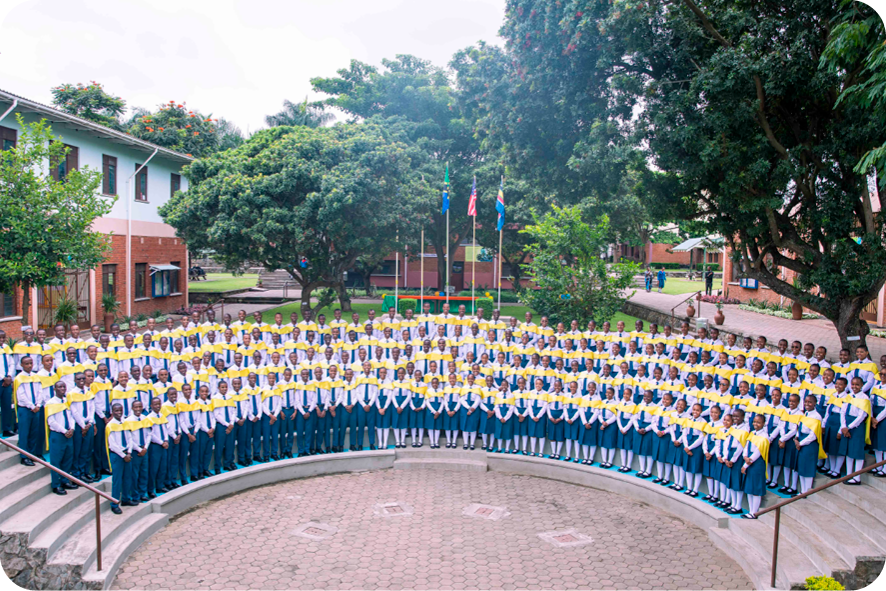
Share this Story
Synonyms for Ancient customs
162 other terms for ancient customs - words and phrases with similar meaning.
Alternatively

- Subscribe Now
FULL TEXT: ‘Kita kita sa Customs’
Already have Rappler+? Sign in to listen to groundbreaking journalism.
This is AI generated summarization, which may have errors. For context, always refer to the full article.
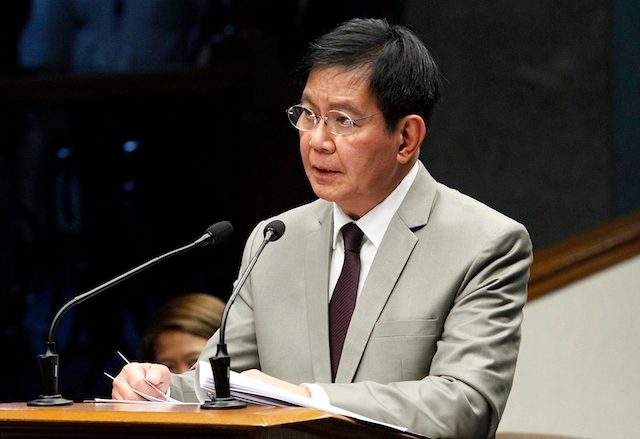
ALBERTCALVELO
MANILA, Phillippines – On Wednesday, August 23, Senator Panfilo Lacson delivered a privilege speech on the “ tara system” or bribery at the Bureau of Customs (BOC).
In his speech, “Kita kita (sa Customs),” Lacson named alleged recipients of bribes in the BOC, led by its former chief, Nicanor Faeldon, as well as the bribe-givers and the bagmen or collectors.
Here is his full speech:
“Hell is empty, and all the devils are here.” So said William Shakespeare many, many years ago. Little did he imagine at that time that more than 10,000 kilometers away and some 400 years later, he would be describing our present day Bureau of Customs. Thus, let me update Shakespeare by paraphrasing him – “Hell is empty and all the devils are at the Bureau of Customs.”
And for the devils, the Bureau of Customs is heaven – a heaven that is a haven for crooks, criminals, malefactors, and faeldons…sorry, I meant felons.
Mr President, I stand on a question of personal and collective privilege on a matter that this representation has found repulsive and reprehensible since the start of my career as a public servant.
In my years of public service I have always taken the adage:
“In life there are 3C’s: CHOICE, CHANCE, CHANGE. You must make the choice, to take the chance, if you want anything in life to change.”
Alas, Mr President, while we see a ray of hope in many government offices, it is undeniable that, over the years, Customs seems to be the one office where darkness and evil always triumph.
A fact underscored by the oft-repeated tale about this lowly guy whose driving ambition was to find employment at the Bureau of Customs. Thanks to the intercession of his congressman, he was able to get a clerical job. After a month of working, he was surprised to find a pay envelope.
“Wow, may suweldo pa pala dito,” he happily exclaimed.
Mr President, no matter how we pull in the reins, the Bureau of Customs fails big time in our government’s fight against graft and corruption.
The facts are telling: As per the Social Weather Stations, the BOC had consistently topped their polls as the MOST CORRUPT government agency from 2005 to 2016.
Here’s the problem – periodically, the headlines shout of yet another big tale of corruption at the Bureau of Customs. But the anger and indignation are not sustained.
The corruption mess is deliberately downplayed by the Customs cretins and consigned to the dustbin of journalism history, ably assisted by their cohorts of PR firms, always ready and able to summarily kill a story that puts the bureau in a bad light.
How many of you still remember the case six years ago of a Customs clerk named Paulino Elevado, who was discovered by accident, literally, to be the owner of a pricey Porsche Carrera sports car? Aside from his Porsche, this Elevado also owned a fleet of six other luxury cars, two houses in an upscale subdivision. His salary? P9,000 per month.
Clerk pa lang yan, hindi pa bossing.
It is time to bring the intensity of the war against drugs to the war against corruption.
Ramdam na ramdam ang war against drugs.
Araw araw, ang daming napapatay.
Pero, ang war against corruption, bakit wala na yata tayong naririnig na nakukulong?
I have always believed that in the fight against corruption, we should only have one single standard.
More importantly, we should not attempt to find who our allies, friends, or enemies are. Regardless of anything or anybody, corruption is evil. And there can be, there should be, no compromise with evil.
For over a decade, the Bureau of Customs failed to show improvement in fighting corruption.
The most recent scandal, however, closely impacts the administration’s war on drugs – the very centerpiece of President Duterte’s campaign promises. In fact, drugs and corruption are the two issues that President Duterte emphasizes in his public speeches and media interviews as tops in his list of priorities.
This makes the issue at hand more wanting and controversial than the same-old stories of Customs’ improprieties.
Last Sunday, President Duterte has announced the appointment of PDEA Director General Isidro Lapeña to replace Bureau of Customs Chief Nicanor Faeldon in the wake of the P6.05 billion shabu shipment from China.
Mr President, I pondered that delivering this privilege speech today might be likened to beating a dead horse. However, Mr President, I have come to realize that when it comes to national interest, you do not deal with just one horse. Instead, you decimate the entire stud.
Nearly 3 months ago, media headlined a story of the seizure by local authorities of 604 kilograms of methamphetamine hydrochloride in a brokerage warehouse in Valenzuela City. This latest drug haul is estimated to have a retail value of P6.05 billion.
Initial reports indicated that this successful apprehension of a big haul of illegal drugs was a product of intelligence sharing and cooperation against cross-border smuggling between China and the Philippines Customs authorities.
However, Mr President, you do not need a title nor a law degree to postulate that something was terribly wrong.
The story as it unfolds sounds more like the inspiration behind the hit movie title, KITA KITA.
First, KITANG KITA natin, because it was so obvious that the enormous shipment was successfully smuggled under the noses or through the indispensable participation of Customs officials.
Second, the huge amount involved showed the obvious – KITA ang KITA. We can see the peso signs in billions.
This exactly is what prompted the Senate Blue Ribbon Committee led by Senator Dick Gordon, in aid of legislation, to conduct an inquiry on what looked like the fast and furious smuggling of 604 kilos of shabu, contradicting the government’s intensified war against drugs.
During 4 public hearings, we have uncovered the identities of key personalities and their modus operandi.
KITA ang KITA. We can easily see the incomes of several Customs officials. A self-confessed “player” a.k.a fixer, Mark Taguba confessed about some payoffs. First, in an executive session, eventually in open public hearings. Yesterday, he presented few names of the Customs officers and bagmen whom he had transactions with. However, Taguba did not spill all the beans.
KITANG KITA natin. We discovered the labyrinth and lexicon of the criminal inside the Bureau of Customs:
The consignee-for-hire;
The selective lane mechanism;
The payola system;
The partner-in-crime relationship between Chinese nationals and our corrupt government officials, complete with middlemen and bagmen.
It is a smuggling mafia out there, Mr President, a criminal state that has no fear of government nor the president.
Kawawa ang Republika ng Pilipinas.
Suffice to say, Mr President, that our quest to dig up how 604 kilos of shabu neatly hidden in 5 cylindrical roller printing machines from China managed to slip under the BOC officials’ noses has opened up a whole cylinder of worms.
During the hearing of the Senate Blue Ribbon Committee, Commissioner Faeldon admitted that he was aware of the so-called “Tara” system even before assuming office.
He said he tried. His excuse: He could not investigate the matter because he was helplessly alone in eradicating corruption in his domain.
To be more specific, Faeldon said “The appointment of the officers in charge in the probe was just December or January. So for the first 6 months, I was working alone.”
Boo-Hoo! Tell that to the marines, Mr Faeldon, but not to this institution.
Mr. President, records show that as early as July 1, 2016, he already hired the services of Gerardo O. Gambala, Milo D. Maestrecampo, Atty. Mandy Therese M. Anderson and Henry Anthony M. Torres as technical assistants each receiving a monthly compensation of P40,000 to 50,000.
KITANG KITA, the lies.
Mr President, even granting Mr Faeldon’s assertion that he was working alone, if he was the principled man that he said he is, he should have stood firm even if he was alone.
As head of the Bureau, with the backing of no less than the President of the Republic of the Philippines, Commissioner Faeldon should have started the cleansing in the Bureau by eliminating what has been corrupting the agency for so long, the “Tara” system.
Unfortunately, instead of going against the system, siya ang kinain ng sistema, thereby effectively tolerating and even promoting the impunity of corruption.
Loud whispers in the four corners of the Bureau of Customs compound tell of a P100-million “pasalubong” to the newly-installed Commissioner, a quarter of which, or P25 million was retained as finder’s fee by his middleman named Joel Teves.
If in the AFP, under a previous administration, you end your stint with the infamous “Good bye, Pabaon. ” sa Bureau of Customs naman you start your stint with a “Welcome, Pasalubong.”
Holy mackerel! Welcome pa lang, may kita na .
It is an outright cash incentive.
Accepting this pasalubong is a slippery slope.
As they say, “Corruption is like a ball of snow. Once it’s set a rolling it must increase.”
Once one accepts the pasalubong, then the ball of corruption starts to snowball.
At, pag nasarapan na, hahanap-hanapin pa ang dagdag-kita.
And just like taking illegal drugs, they find themselves addicted to bribes in exchange for favors. Tuloy ang ligaya ng mga corrupt. Indeed, loose morals will blur lines.
How can we stop the importation of illegal drugs at the Bureau of Customs if the graft activities of its officials and personnel and the corrupt system persist in the seaports and airports?
The issue at hand would have never happened if there was no collusion by someone with somebody from the inside, whether it is a middle-level official of the bureau or all the way up.
Kung walang kita, lahat makikita. Kung may kita – eh, wala talagang pagpupuslit na makikita.
Mr President, everybody knows, at the Bureau of Customs, it’s “everybody happy.” They have this so called “payday” Friday / TGIF / Friday-three o’clock-habit, or whatever day of the week and hour of the day they now choose to make themselves happy, and yes – filthy rich.
So many monikers have been coined for this joyous tradition at the BOC but all refer to a weekly assembly of several customs officials and selected employees, where multimillion peso bribes otherwise known as “Tara” are given and divided up.
Mr President, for the past few weeks, I have been expressing my disbelief with President Duterte’s unusual calm and gentle reaction to the alleged involvement of his people in Customs to the massive volume of drugs that easily made its way to our controlled borders.
Nevertheless, after weeks of public outcry here, there and everywhere for the removal of Faeldon, President Duterte has finally acted and replaced him as Customs chief. Even for an “honest man,” sabi nga ho natin , it is better late than never.
Now, in case our distinguished colleagues are wondering how and from whom I got all these information, let me tell you as a background, Mr. President, with a little bit of exaggeration – si Nick Faeldon na lang yata ang hindi nakapag-ambag ng datos na ipapakita ko sa inyo sa mga susunod na sandali.
Indeed, when the so-called Customs payola or “Tara” hit the fan and made it to the headlines, information came pouring in.
Quite a number of top and middle-level Customs officials and employees, as well as brokers, even a civic-minded individual who has been gathering information on this matter for the longest time started contacting our office. At least two of those I mentioned directly came to us to provide their own versions of the “Tara” list.
From various sources inside and outside the Customs Bureau that I had interacted with over the past two weeks regarding the “Tara” list, we carefully vetted and cross-matched each and every information to come up with an objectively filtered and detailed list of who and how much each office or official in the Bureau collects per container per day.
From the list furnished us by various sources, a “standard tara” amounting to a low of P19,000 to a high of P45,000 is paid to the Customs officials in the Central Office for each container.
On top of the “standard tara” paid to Customs Central Office, Manila International Container Port (MICP) officials and employees also collect payola in the amount of P14,700 (on the low side) and P23,700 (on the high side) for 40-footer containers. Hence, the total tara being paid for each container is from P33,700 to P68,700.
For a 40-footer container for the Port of Manila (POM), the tara of the Customs officials and employees amounts to P15,700 to P26,700. If we add this to the standard tara mentioned above, the total tara ranges from P34,700 to P71,700.
For a 20-footer container, an additional P12,200 to P20,700 tara for the Customs officials and employees in the Manila International Container Port (MICP) is added to their standard tara, making a total tara for each 20-footer container amounting to P31,200 to P65,700.
For the Port of Manila (POM), Customs officials and employees are receiving taras from a low of P13,200 to as high as P23,700 making the total tara for a 20 footer ranging from a low P32,200 to a high of P68,700.
From this, the share of each office or person within the Bureau can range from a low of P200 to a high of P15,000 per container. Believe it or not, officials from the top offices of the Bureau down to those who monitor the “Gates” and “X-RAY” have their share in the tara.
What is amusing, Mr President, ang mga dokumento at listahan ng mga tumatanggap ng “Tara” ay naglalaman ng halos pare-parehong mga pangalan ng Customs officials and offices involved, bagmen at operators, maliban sa mga pangalan, (at syempre naman) ng mismong nagbahagi ng impormasyon sa amin.
Having said that, it is almost an easy job to come up with a very credible “Tara” list. So without much ado, allow me to proceed.
Mr President, I beg your indulgence as I have a lot of names to read from this list.
Allow me to start with the list of alleged bribe givers or “players” at the Bureau of Customs:
- Manny Santos
- Jude Logarta
- Ruben Taguba/Mark Taguba
- Noel Bonvalin
- John Paul Teves
- Gerry Teves
- Jan Jan Teves
- Ringo Teves
- Diogenes “Dennis” De Rama
- Bim Castillo
- Atty Veneer Baquiran
- Armando “Burog” Tolentino and Ruel Tolentino
- “Kimberly” Gamboa
- Bobot Sison
- Marty Pimentel of Cebu
- A certain “Eunice” of Davao
- Jun Diamante
- Arnold Saulong
- Hope Arnulfo Saulong
- Boy Sabater
- Aying Acuzar / Eduardo Dio
- Grace Bisaya
- Charlie Tan of Davao Group
At this point, here are the names of identified collectors/bagmen:
- Atty. Christopher Bolastig thru Russel and Estrella, and Atty Genefielle Lagmay for the Office of the Commissioner (OCOMM)
- Nanie Koh for Import and Assessment Service (IAS); Also included is a certain Lorna Rosario
- Joel Pinawin, Ollie Valiente, and Teddy Sagaral for Customs Intelligence and Investigation Service (CIIS)
- Atty Larribert Hilario for the Risk Management Office (RMO) /Command Center (COMMCEN)
- A certain “Magic” or Major Salamanca for the Enforcement Group (EG)
- Bien Rubio, Jerry and Diego Santiago for the Intelligence Group (IG)
- Jasmin Obillos for Revenue Collection Monitoring Group (RCMG)
- Sia Otto and Roy for Assessment and Operations Coordinating Group
- Bien Rubio, for Intellectual Property Rights Division
- Atty Tom Tagra for Legal Services
- Boy Garcia for Accounts Management Office (AMO)
- Certain Mamadra, Bobadilla and Mamao for Customs Collector in NAIA
- A certain “Hunk” for the Customs Collector in Subic
- Efren Ambagan and a certain Guiao for the Customs Collector in Clark
- Alfred and Daniel Wagwag for the District Collector, Port of Manila (POM)
- Jun Rapa for the Dep. Collector for Operations for POM
- Alex, Atty Mimi Aldave and Atty Vener Baquiran for the District Collector, Manila International Container Port (MICP)
- Jayson Calinap for X Ray in MICP
- Agama and Junjun Reyes for X Ray at POM
- For the Enforcement and Security Service (ESS) for Manila International Container Port : Ordoña and Bundukin with a certain “Ante” as runner
- Lino Arroyo for the Enforcement and Security Service, Port of Manila
Meanwhile, here’s a brief summary of the amounts being regularly distributed in the payola system. Please note that these amounts are given per container.
For Bureau of Customs, Central Office, the following are the standard tara for each office or division:
- P5,000 to 10,000 for Office of the Commissioner (OCOMM)
- P5,000 to P10,000 for Command Center (COMMCEN)
- P1,000 to P3,000 for the Assessment Operations Coordinating Group (AOCG)
- P1,500 to P3,000 for the Intelligence Group (IG)
- P3,000 to P10,000 for CIIS CENTRAL
- P500 to P1,000 for CIIS Director’s Office
- P1,000 to P3,000 for the Intellectual Property Rights Division (IPRD)
- P1,000 to P2,000 for the Accounts Management Office (AMO)
- P1,000 to P3,000 for the Import and Assessment Service (IAS)
For Manila International Container Port (MICP) and Port of Manila (POM):
- P9,000 to P15,000 for the Section Heads, Appraisers and Examiners in the Formal Entry Division for both MICP and POM
- P1,000 to P3,000 for the Informal Entry Division for both MICP and POM
- P3,000 each for MICP and POM Collector’s Office
- P500 to P1,000 for CIIS Port for both MICP and POM
- P500 for Enforcement and Security Service for both MICP and POM
- P500 to P1,000 for both MICP and POM
- P200 for the Piers and Inspection Division for both MICP and POM
- P1,000 to P3,000 for the Deputy District Collector of POM
- P1,000 to P1,500 for XRAY
Official records from the Bureau of Customs disclose that, on the average, around 15,000 to 16,000 containers are transacted for release every week at the MICP and POM. Of this, between 6,000 to 6,400 or approximately 40% of the total weekly containers have tara.
Mr President, mayroon po tayong tinatawag na mga “Big Players.” Sila ang mga halos naghahari o namamayagpag sa pagpapalabas ng mga kargamento sa Customs.
A total of 390 to 490 containers per day or 1,950 to 2,450 containers weekly are being facilitated by the so called “Big Players” broken down as follows:
- 100-110 containers – David Tan
- 80-100 containers – Davao Group (Taguba belongs to this group)
- 80-100 containers – Manny Santos
- 80-100 containers – Teves Group
- 50-80 containers – “Kimberly” Gamboa
Finally, Mr President, here are the recipients of tara/payola at the Bureau of Customs:
- Commissioner Nicanor Faeldon
- Deputy Commissioner Teddy Raval – Intelligence Group (IG)
- Deputy Commissioner Ariel Nepomuceno -Enforcement Group (EG)
- Deputy Commissioner Gerardo Gambala of the Command Center
- Deputy Commissioner Natalio C. Ecarma III of Revenue Collection Monitoring Group (RCMG)
- Deputy Commissioner Edward James Dy Buco of Assessment and Operations Coordination Group (AOCG)
- Director Neil Estrella – Customs Intelligence and Investigation Service [CIIS] (alleged to collect also for the Office of the Commissioner [OCOMM] together with Chris Bolastig)
- Atty. Zsae de Guzman – Chief, Intellectual Property Rights Division
- Atty Larribert Hilario of Risk Management Office (RMO)
- Joel Pinawin, OIC Chief, Intelligence Division of the BOC (one of the alleged collectors of Director Estrella)
- Director Milo Maestrecampo – Import and Assessment Service (IAS)
- Atty Grace Malabed, Acting Chief of the Account Management Office (AMO)
- Atty Alvin H. Ebreo, Director Legal Service under Revenue Collection Monitoring Group (RCMG)
- All Section Heads, Appraisers and Examiners in the Formal Entry Division in both the MICP and POM
- Athena Dans of the Informal Entry Division MICP
- All Section Heads, Appraisers and Examiners in the Informal Entry Division in the POM
- MICP & POM Sections 1, 9, 10, & 15 Chief Appraiser and Examiner
For the District Collectors/Officers, the following names were mentioned:
- Collector Jet Maronilla of the MICP
- Collector Rhea Gregorio of POM
- Collector Edgar Z. Macabeo of NAIA
- Collector Elvira Cruz of Cebu
- Collector Maritess Martin of Clark
- Collector Mimel Talusan of Subic
- Collector Reynaldo M. Galeno of Batangas
- Deputy Collector Mel Pascual for POM
- Captain Tikoy Guttierez of Enforcement and Security Service (MICP) (deceased)
Mr President, an unimpeachable source provided me with information involving a prominent Customs official listed above. For the period covering May 16 to June 28, 2017, Mr. Customs Official’s total encashment amounted to Five Million One-Hundred Nine Thousand Pesos (P5,109,000), with the following breakdown:
- P1.5 million check deposit on May 16, 2017
- P1.2 million check encashment on June 01, 2017
- P699,000 encashment on June 05, 2017
- P1 million encashment on June 08, 2017
- P910,000 encashment on June 19, 2017
- 1.3 million encashment on June 28, 2017
The “Tara” System, Mr President, shows that there is a systemic corruption in the Bureau. In fact, with almost every office and official receiving their share of “Tara,” the Bureau can give the Mafia stiff competition.
Mr President, the Supreme Court in a ruling said, “we cannot afford to fail either in combating the drug menace or in protecting the individual rights and liberties we have enshrined in our Constitution. Either way, the consequences of continued failure are hard to imagine.”
The drug problem cannot be solved by focusing on the demand reduction effort alone.
Hindi pa ba sapat ang isang taon at libu-libong napatay ng mga pulis at vigilantes para makita at mapatunayan natin ito?
Since my days in law enforcement, we have always embarked on a two-pronged strategy in combating illegal drugs- demand or market constriction and supply reduction.
True, hunting down big-time as well as small-time pushers and drug addicts in the streets may suppress the drugs market.
But, if our frontline government agency called the Bureau of Customs would allow, consciously or otherwise the convenient smuggling of tons of shabu into our country, it is impossible to win the battle against illegal drugs, simply because the supply reduction side of the anti-drugs strategy is failing miserably.
Parang gripo, patuloy ang daloy ng illegal drugs sa bayan, tone-toneladang ilegal na droga.
This runs counter to the policy adopted by the State as enunciated in Section 101 of Republic Act 10863 otherwise known as the Customs Modernization and Tariff Act, to wit:
“[i]t is the policy of the State to protect and enhance government revenues, institute fair and transparent customs and tariff management that will efficiently facilitate international trade, prevent and curtail any form of customs fraud and illegal acts, and modernize customs and tariff administration.”
This Policy is in recognition of the important role that the Bureau of Customs plays in being the country’s first line of defense against the threats that arise from international trade. The problems that our country is facing now, such as smuggling, fraud and drug trafficking can effectively be lessened if we only fortify our first line of defense on border management. Thus, it is incumbent upon us to address this BOC issue head on and at its core.
There is a saying that every time we need to solve problems, we should dig at the roots instead of just hacking at the leaves.
If we intend to remain committed to the War on Drugs, we need a War on Corruption.
Mr President, I have known the newly-appointed Customs Chief, General Sid Lapeña, as an honorable man. In fact, I can personally vouch for his integrity. With his appointment as the new Customs chief, I can only hope na hindi siya kakainin ng sistema tulad ng nauna sa kanya.
His highest calling at the moment is to descend to the gates of hell and destroy the brazen corruption within the country’s most corrupt government agency.
General Lapeña needs to institutionalize genuine reforms, and by genuine reforms, that would mean the abolition of the corruption system from top officials down to the last rank-and-file in Customs.
Mr President, I believe nothing will happen if we do not address the moral bankruptcy that is intrinsic among the officials and members of the Bureau of Customs.
We should not turn our heads too far from a deeper issue that holds back the progress of our nation. Henceforth, it is also high time to send off an all-out, sustained war against corruption.
And the battle starts at the Bureau of Customs.
I firmly believe, then and now, that it is the only way we can build a better, more progressive future for this country.
Thank you, Mr President.
– Rappler.com
Add a comment
Please abide by Rappler's commenting guidelines .
There are no comments yet. Add your comment to start the conversation.
How does this make you feel?
Related Topics
Recommended stories, {{ item.sitename }}, {{ item.title }}.
Checking your Rappler+ subscription...
Upgrade to Rappler+ for exclusive content and unlimited access.
Why is it important to subscribe? Learn more
You are subscribed to Rappler+
- Raising A Confident Child
Scientific Reasons Behind 9 Oldest Customs
Did you know that many of the Indian traditions that we follow regularly or on important occasions have their basis in science? Tell your child what these interesting customs actually mean

When we meet friends and relatives in a traditional and festive setting, we join our hands to say 'Namaste'. When we go visiting with our children to meet the grandparents or elderly relatives, it is Indian culture to touch the feet of the elders and ask the kids to do the same. Many of us wear a dot in the middle of the brow, but don't really think too much about it.
Most of these ancient rituals have become a part of our daily lives and are taken for granted. When was the last time you really thought about why you follow these customs and whether they mean something? It turns out, these important rituals are quite scientific and we follow them because of certain benefits they give us. Often, children ask us why a particular custom is being followed, and we may not have a definitive answer to their question. It would be a worthy exercise to educate your child about some of the oldest traditions and the science behind them, so that they don't follow these customs blindly.
Read on to find out the scientific reasons for some of the oldest customs that we follow:
1. Joining hands to greet: It's the most popular greeting in the Indian context. Even though saying hello has become more the norm these days, joining our hands to say Namaste has its own charm. We all know that it is a mark of respect, but turns out it also a scientific basis to it. The tips of our fingers serve as pressure points for the eyes, ears and mind and when these are pressed together, our senses are heightened, and we remember the person being greeted for a long time.
2. Sitting on the floor to eat: Nowadays, how many of us sit on the floor while having our food? Not many. But this age-old practice has major benefits and there is a scientific explanation for it. When we sit on the floor cross-legged for a meal, we are actually sitting in Sukhasana, which is a yoga posture. This position is said to promote relaxation. The movement that we make of bending and sitting upright continuously while eating, releases digestive juices and helps in digesting the food.
3. Wearing bindi on the forehead: One of the main nerve points in our body is located right between the two brows. According to ancient scriptures, wearing a red dot ( bindi or tilak ) on this particular point, stimulates the nerves and helps in retaining energy. The pressure that we put on this area, helps blood supply to the facial muscles, keeping the face looking younger.
4. Surya Namaskar:

Surya Namaskar is a way of paying homage to the Sun God. This ancient practice consists of 12 different postures and is best done at sunrise. According to the Art of Living , different energies govern different parts of the body. The solar plexus located behind the navel is connected to the Sun. Regular practice of Surya Namaskar enhances the solar plexus. This is supposed to have a positive effect on creativity and leadership skills.
5. Wearing henna: Mehendi or henna has strong medicinal properties. Applying it on the hand has a cooling effect. It helps in relieving stress during tense situations. That is one of the reasons that henna is applied to the bride's hands, apart from the fact that the design looks stunning and adds to the bride's beauty. Applying this herb on the hands is helpful in calming the nerves and prevents the bride from getting stressed out on the most important day of her life.
6. Fasting: This practice which is quite common among Indians, especially during festive occasions. The ancient medical system of Ayurveda says that fasting has it's scientific basis. Our body accumulates a lot of toxins over the time and many of the ailments of the digestive system are caused because of this reason. Regular cleansing of these toxins helps in keeping the body healthy and fasting is the best way to do cleanse. During fasting, the unwanted elements inside our body get flushed out, and we feel rejuvenated.
7. Ear piercing: It is quite common among Indians and few other cultures in the world to pierce the earlobes of small children, especially girls, a few days or months after they are born. Why do we follow this practice? Ear piercing is an ancient custom which is supposed to prevent certain diseases among children including respiratory problems, hernia and so on. Wearing earrings ensures the flow of energy in the human body.
8. Lighting of lamp: We all know that lighting a lamp/ diya means going from darkness to light. But this age-old Indian tradition has its basis in science. When we light a lamp, the magnetic force produced by the light is believed to bring about changes in the atmosphere and remove impurities in the air. This electromagnetic force also affects our body and skin, therefore revitalizing our blood cells.
9. Touching the feet of elders: It is a custom followed by most of us to show respect to our elders. However, not many of us know that this ancient practice has a scientific explanation too. The nerves of our body are very sensitive to energy flow. When our palms touch the feet of an elderly or pious person, the positive energy emitted from them comes in contact with our energy, through the hands and feet. This builds an immediate connection and the nerves of the fingertips and the feet get activated. This facilitates the flow of positive energy.
Knowing the scientific reason behind age-old customs helps us understand their significance and this way we can explain it to the children properly. Next time you practice any of these traditions, make sure you explain the reasons behind these to your child as well.

Malini Sep 5, 2017

Comment Flag
Abusive content
Inappropriate content
Cancel Update
Related Topics See All
More for you.
Explore more articles and videos on parenting

Pre-schooler to 18+ • 6 Mins Read • 12.7K Views
5 Things You Should Tell Your Self-Critical Child
Being self-critical is natural and can help you improve. But frequent negative self-talk is a cause for concern. What could you do to stop your child from being too hard on herself?

Pre-schooler to 18+ • 3 Mins Read • 5.4K Views
Teach your child perseverance
While children love to take up challenges, most give up in the face of adversity. Only a few display the trait of perseverance. As a parent, teach your child how to persevere against all odds.

Toddler to 18+ • 4 Mins Read • 7.2K Views
Phrases Parents Use That Can Discourage Children
Sometimes words parents say can hurt and discourage children. Here are a few phrases you should never use in conversations with your children.
- Communities
Join a community to interact with like-minded parents and share your thoughts on parenting

2.5K members • 62 Discussions
Curiosity, tantrums and what not!

1.9K members • 53 Discussions
The Active and Enthusiastic Middle Years

11-18 Years
1.8K members • 73 Discussions
From Self-consciousness to Self-confidence

Just for Parents
4K members • 160 Discussions
A 'ME' space to just BE!
Discussions Topics
Share your thoughts, parenting tips, activity ideas and more
Hobbies and Entertainment
New member introduction.

Family Fun Challenges and Activities
- Gadget Free Hour
- Discussions
Share your thoughts, tips, activity ideas and more on parenting
Hair issues in children?...
My preteen is a handful to manage., do you have a picky-eater..., nutrition for 6 - 10 year olds.
A compilation of the most-read, liked and commented stories on parenting

Is it okay for a boy to express his sadness through tears? Let us find out
1 Min Read • 5.3K Views

Possible risks a child might face in the neighborhood and ways to protect them when they are out
5 Mins Read • 6.9K Views

Ways To Create Teachable Moments For Your Toddler
9 Mins Read • 4.2K Views

10 Ways to Teach Your Child Peace
8 Mins Read • 13.8K Views

Why Self-discipline Is An Important Quality For Children, And Ways To Help Your Child Master It
8 Mins Read • 12.4K Views

We Look At 6 Wonderful Ways Parents Can Effectively Teach Children to Help Others
3 Mins Read • 13.2K Views
Top Searches
- Notifications
- Saved Stories
- Parents of India
- Ask The Expert
- Community New
- Community Guideline
- Community Help
- The Dot Learning Circle
- Press Releases
- Terms of use
- Sign In Sign UP
We use cookies to allow us to better understand how the site is used. By continuing to use this site, you consent to this policy. Click to learn more
The Long History Behind Your Favorite Celebrity Commencement Speech
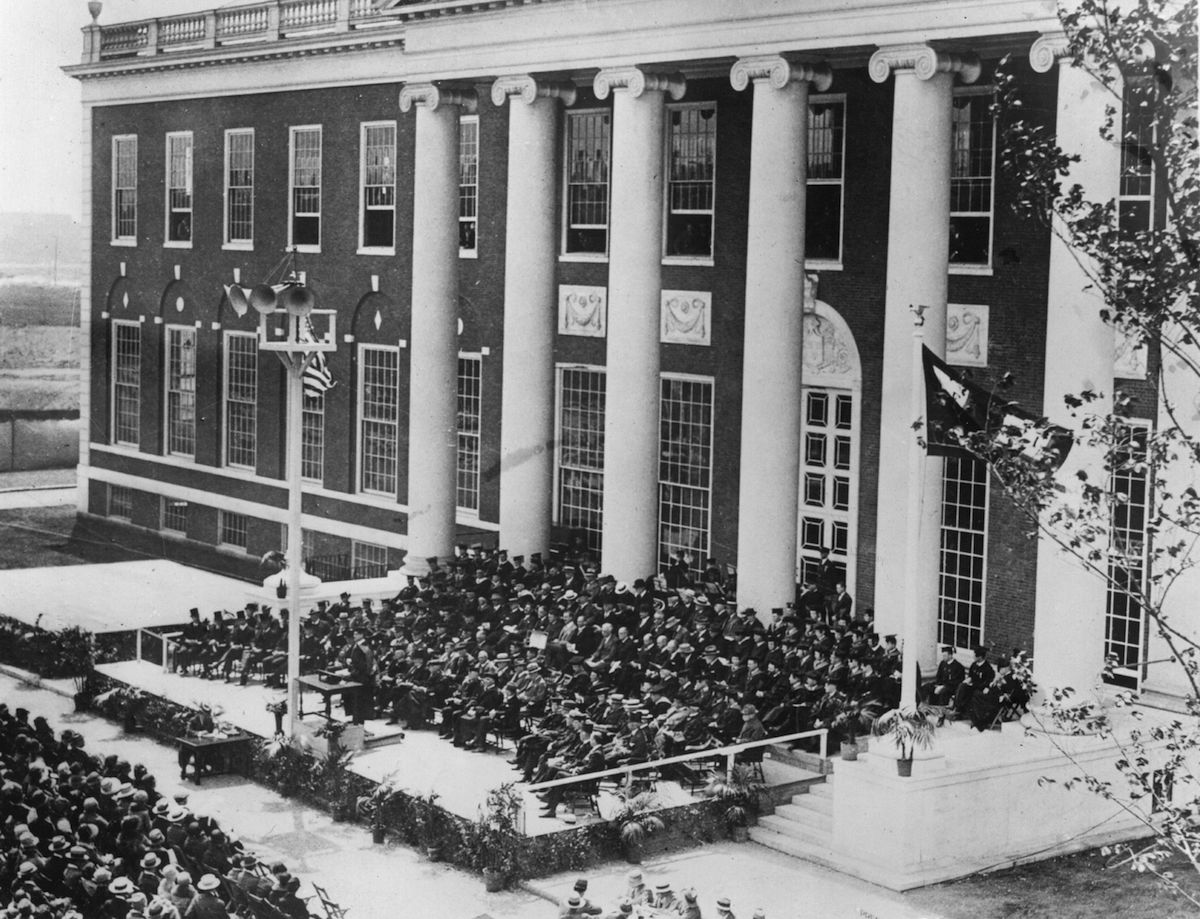
E very year as summer edges ever closer and temperatures ever warmer, important people—ranging from the president to actors and from comedians to foreign dignitaries—flock to American colleges to give grads their two cents about life, work and everything else. The commencement speech has become its own advice-filled genre, spawning hit books and viral videos . But when did we become so inundated with by these seasonal advice-givers?
There’s no clear indication of which university started the trend of tapping celebrities to speak at graduations, but over the past three or four decades their numbers have grown from a few fun speakers amid a torrent of university officials to the flood of businesspeople, actors, writers and humorists who headline today’s ceremonies.
Notable politicians have been part of graduation ceremonies since the very earliest ones: Massachusetts Governor John Winthrop attended Harvard’s first commencement in 1642, when there were just nine “commencers .” But early commencement ceremonies were less about outside speakers than about hearing from the students themselves: those graduating would give orations in Hebrew, Greek and Latin as well as “disputations,” formal academic debates on philosophic questions. (The tradition of having a speech in Latin continues at some universities, though these days a translation is usually provided—plus, sometimes, instructions about when to laugh.)
Anthony Grafton, professor of intellectual history at Princeton University, says the commencement speech is “a very old custom and it goes with the idea that oratory was one of the central things that students were learning, and one of the central skills of the university.” Other speakers would also be academics, Grafton adds, who would demonstrate the level of disputation possible at different ranks of academic achievement.
Get your history fix in one place: sign up for the weekly TIME History newsletter
Despite what sounds like a fairly dry program, these commencement exercises were a big hit. Samuel Eliot Morison’s 1935 text The Founding of Harvard College described the activities of early commencements: “the commencers now having proved their proficiency in the three learned tongues, and the audience being suitably impressed and exceedingly fatigued, the assembly adjourns at eleven o’clock for dinner,” Open to the public, it was also an occasion for revelry. Albert Matthews, who studied Harvard commencements from 1642-1916, likewise noted that “for nearly two centuries it was the great gala day of the colony, the province, the state” and that “not merely the alumni but the populace” would flock to attend.
Over time, however, oratory began to lose its place as a central skill students were expected to acquire at college. Accordingly, their students’ displays of knowledge became a smaller part of the commencement exercises. To fill the gap, in came the guest speakers.
Even so, those early commencement speakers tended to be from the university in question or statesmen of some sort, not cultural figures. Sticking with Harvard, for example, 19th century commencement speakers did occasionally break the mold —Leslie Stephen, father of Virginia Woolf and “man of letters,” was the 1890 speaker—but tended to be prominent figures from fairly staid and proper backgrounds, often British aristocrats. Over time, artists and businessmen began to creep in among the academics. At first it was a trickle (Carl Sandburg in 1940; Thornton Wilder in 1951). By the 2000s, the school featured speakers with more celebrity backgrounds, like J.K. Rowling and Bill Gates, about as often as world leaders and academics.
MORE: 10 Timeless Pieces of Advice from Commencement Addresses
One reason why it may seem like there are more commencement speeches than ever is numbers: some individuals are sought after every year, and it has become a new normal for presidents to give multiple speeches each year. In NPR’s archive of 354 of the best commencement speeches, almost half were delivered after 2010, and only a handful before 1960.
And sure, recent speeches are easier to find and more likely to be relevant to our lives today—but that imbalance also reflects something deeper: changes in which jobs are considered important, whose advice is considered valuable, where we find counsel and who we most admire.
More Must-Reads from TIME
- Welcome to the Noah Lyles Olympics
- Inside Fiji’s Fiery Battle Against Plastics
- Column: As Biden Vies to Salvage Nomination, Growing Chorus of Democrats Say It’s Too Late
- How to Watch Lost in 2024 Without Setting Yourself Up for Disappointment
- How to Buy Groceries Without Breaking the Bank
- The Rise of the Thirst Trap Villain
- Why So Many Bitcoin Mining Companies Are Pivoting to AI
- The 15 Best Movies to Watch on a Plane
- Get Our Paris Olympics Newsletter in Your Inbox
Contact us at [email protected]
- Share full article
Advertisement
Supported by
Popular Phrases That Carry A History; Odd Customs of the Past Buried in Everyday Speech Origin of Familiar Words.
THE current coin of our daily speech passes readily from lip to lip, and phrases, however ancient or curious their origin arouse no comment, as though they were of yesterday, when they bear the stamp of other ages and climes. In tracing the history of such expressions, many a quaint old custom or institutions is revealed. View Full Article in Timesmachine »

IMAGES
VIDEO
COMMENTS
Durdin holds Maoist leadership has accomplished its cultural revolution objective of eliminating old things, old ideas, old customs and old habits; describes Red Guards invasion of homes ...
Terminology. The term "Four Olds" first appeared on June 1, 1966, in Chen Boda's People's Daily editorial, "Sweep Away All Cow Demons and Snake Spirits", where the Old Things were described as anti-proletarian, "fostered by the exploiting classes, [and to] have poisoned the minds of the people for thousands of years". However, which customs, cultures, habits, and ideas specifically constituted ...
Text-to-speech Audio. The Old Customshouse opened in 1855. Delaware's first customs house sat in New Castle before moving to Wilmington in 1800. In 1837, the First Board of Trade emerged, intending to promote trade through Wilmington's port. The organization's first move involved appealing to Congress for a permanent custom house.
Mao wanted them eliminated because they were reminders of who used to be in power. The Four Olds consisted of Old Ideas, Old Customs, Old Culture, and Old Habits. These were the elements that ...
22 Dec. The importance of preserving cultural and traditional values. In recent years there has been a lot of talk about the urgency and importance of preserving our environment. Pollution and careless exploitation are certainly undermining the ecosystems ' chances of natural recovery. However, globalization has brought with it strong ...
At the end of the speech, the 81-year-old President awarded the Presidential Medal of Freedom, the highest civilian honor in the U.S., to NATO Secretary General Jens Stoltenberg. President Biden is scheduled to deliver remarks during a news conference Thursday where he is expected to face questions about his age and cognitive health.
Florida school board, sued for book bans, wants to take testimony of 7-year-old student Florida has more book removals and more book challenges than any other state, free speech groups say.
Old_pallet IA-NS-0001525 Openlibrary_edition OL5613688M Openlibrary_work OL1122432W Page-progression lr Page_number_confidence 83 Page_number_module_version 1.0.5 Pages 370 Pdf_module_version 0.0.20 Ppi 360 Rcs_key 24143
The Queen's Speech, which formally opens Britain's parliament each year, is a colorful ceremony steeped in traditions dating back centuries. ... Eccentric, centuries-old customs at Queen's Speech ...
A 14-year-old girl was stabbed to death at home after a confrontation with her parents, a court has heard. Scarlett Vickers suffered a single stab wound to the chest in the incident at a semi ...
The Queen's Speech, which formally opens Britain's parliament each year, is a colorful ceremony steeped in traditions dating back centuries. ... Eccentric, centuries-old customs at Queen's ...
Old English Customs Extant at the Present Time: an account of local observances Bookreader Item Preview
The United States also has a vibrant movie industry, centered in Hollywood, California, and American movies are popular worldwide. The U.S. film industry earned a record $100 Billion in 2019 ...
Away went Starmer, back to 10 Downing Street to give a six-minute speech. Then he got to work. ... The 61-year-old lawyer said there was "a weariness in the heart of the nation" and that the ...
Latin American cultures and the Romance cultures share the common custom of kissing both close loved ones and new acquaintances on the cheek as a form of salutation. Yet, the French seem to take this to a whole new level with the number of nuances involved in their kissing rituals. For one, the rules vary for men and women.
At a high school in Cobourg, Ontario they had an etiquette list in a display for teachers from the 1880's (opened in the mid 1800's). Two or three I remember was that a teacher should never get a shave at the barber's (because it was expensive and you are showing off, by being seen there), they had to read good books, they could only court on Sundays with a chaperone, they had to bring their ...
Book Source: Digital Library of India Item 2015.82384dc.contributor.author: Drake Carnell F Jdc.date.accessioned: 2015-06-30T17:30:13Zdc.date.available:...
Culture is the total way of life that people in the society are blessed with. Culture is the characteristics of a particular group of people, defined by everything from language, religion, cuisine, social habits, music and arts. Through culture we are governed by norms and customs, which are the pillars of any society. If these […]
Another way to say Old Custom? Synonyms for Old Custom (other words and phrases for Old Custom). Synonyms for Old custom. 72 other terms for old custom- words and phrases with similar meaning. Lists. synonyms. antonyms. definitions. sentences. thesaurus. Parts of speech. nouns. suggest new. ancient custom. n. ancient tradition. n. former custom ...
Ancient Customs synonyms - 162 Words and Phrases for Ancient Customs. old customs. n. old-fashioned customs. n. older customs. n. past customs. n.
MANILA, Phillippines - On Wednesday, August 23, Senator Panfilo Lacson delivered a privilege speech on the " tara system" or bribery at the Bureau of Customs (BOC). In his speech, "Kita ...
It would be a worthy exercise to educate your child about some of the oldest traditions and the science behind them, so that they don't follow these customs blindly. Read on to find out the scientific reasons for some of the oldest customs that we follow: 1. Joining hands to greet: It's the most popular greeting in the Indian context.
STORY OF THE MILITARY SALUTECHAPTER 5: MILITARY CUSTOMS & COURTESIESGENERALMilitary courtesy is. simply the display of good manners and politeness in dealing with other people. M. from both subordinate and senior to each other.HISTORY OF THE MILITARY SALUTEMen of arms have used some. rm of the military salute as an exchange of greeting since ...
The commencement speech has become its own advice-filled genre, ... says the commencement speech is "a very old custom and it goes with the idea that oratory was one of the central things that ...
An old Navy tradition has it that the ship's cook shines the ship's bell and the ship's bugler shines the ship's whistle. This tradition may still be observed in some of the ships of the modern Navy. However, in normal practice, the ship's bell is maintained by a man of the ships' division charged with the upkeep of that part of the ship where ...
Full text is unavailable for this digitized archive article. Subscribers may view the full text of this article in its original form through TimesMachine.